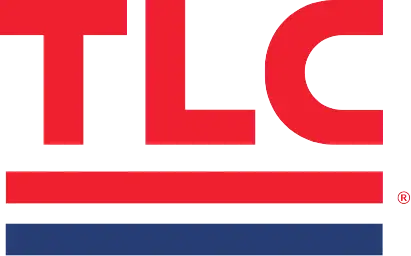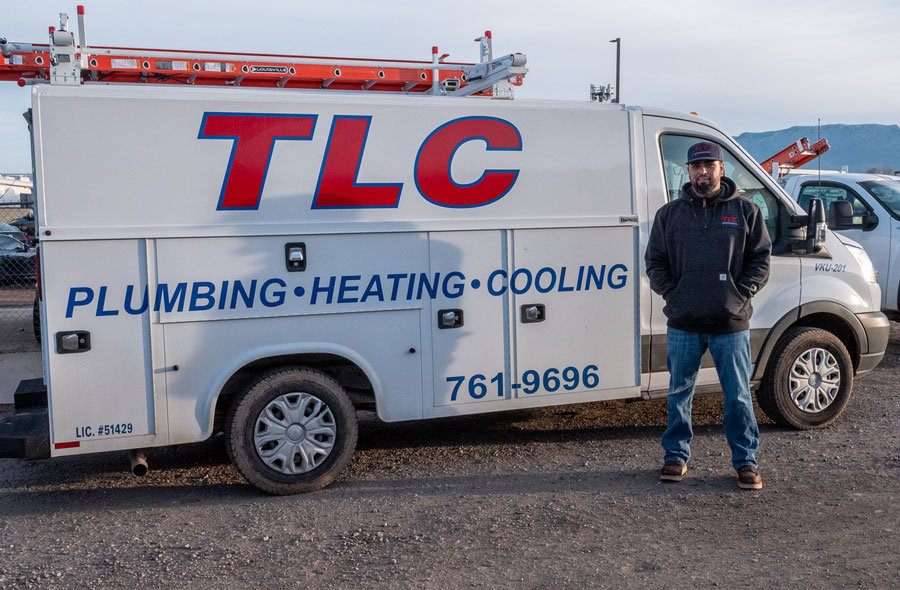
Rich, Your Plumbing & Drains Expert
Rich is a local New Mexican, having been born in Rio Rancho. He’s spent his entire life in the Albuquerque area. For 15 years he was a warehouse manager, but he gave it up to come work at TLC because he wanted a career, not just a job. He’s now a part of the TLC Plumbing Team as a licensed Journeyman Plumber.
Rich and his wife stay busy raising their four kiddos. Softball is a family event for them. He also finds time to hang out with his friends and go to the gym.
Plumbing & Drains Tips by Rich with TLC Plumbing
To Flush, or Not to Flush
One of the most important things to remember is that the toilet is for waste only. Flushing anything else – like diapers, wipes, feminine products, and other toiletries – can lead to serious clogs in your plumbing and drains. Rich says that even if the package says that the wipes are flushable, they actually aren’t. A good rule of thumb is to throw anything that qualifies as trash into the bin and not into the toilet.
How To Troubleshoot Your Garbage Disposal
When garbage disposal stops working, or “seizes” as Rich puts it, you don’t necessarily need to call a plumber. Rich explains that garbage disposals have an internal breaker, kind of like your house does. There’s a reset button underneath your garbage disposal that you can push to see if the breaker tripped. If the garbage disposal starts working after you press the reset button, then you’re back in business!
Pro Tip: If the reset button doesn’t fix the garbage disposal, there’s one more thing you can try before calling a plumber. Under the disposal near the reset button is a hole shaped like a hexagon. Sometimes, the disposal comes with a Hex key – also called an Allen key – that fits into the hole. If not, no worries. Any Allen key that fits will do the trick. Stick the Allen key in there and work it back and forth to unjam the garbage disposal.
If neither of these tips works, it’s time to call a plumber to fix it.
How Do You Know You Need To Replace Your Toilet
Nearly all toilets are what we call “low-flow” toilets. They usually have a 1.2 to 1.6-gallons per flush rating. Rich says that if you have a lower rated toilet, like 1.2, it sometimes uses more water. The reason is that you may have to flush twice to get everything from Point A to Point B. It’s better to flush a little more water once. It will save you water and help your toilet work more efficiently.
Even if you have a 1.6 rated toilet, you may still need a new one. If the jets in the toilet bowl get calcified, it slows down the whole process. Next time you have a plumber out, have him check it to let you know if you need to get a new toilet.
Why You Should Know Where Your Drain Cleanouts Are
We asked Rich what would make plumbing or drain calls easier for both homeowners and plumbers. The first thing that came to his mind was drain cleanouts. A drain cleanout is a main drain line access point, usually found in your yard. The beauty of a drain cleanout is that it makes it easier to inspect and clean drains. It helps to take the guesswork out of repairs. It’s also less messy than snaking through the toilet flange or the roof.
Take a quick look outside to see if you have drain cleanouts. They are usually in the front or backyard and look like capped pipes. They’re usually sticking a few inches above the ground. If you have them, great! Your next visit from the plumber will be easier.
If you don’t have drain cleanouts and your pipes back up often, it’s a good idea to get cleanouts installed. Get an estimate from a plumbing company you trust that is licensed, bonded, and insured.
Preventive Plumbing and Drain Maintenance
Rich says, “It’s always better to be proactive than reactive.” He suggests getting preventive maintenance done regularly. An annual inspection is probably fine for most homes. You may want to do maintenance more often, like quarterly or twice a year, if your home is prone to plumbing problems.
If you are a TLC Preventive Maintenance Agreement member, you can request an annual plumbing inspection at no additional cost. A plumbing inspection tells you if you have any minor issues that are about to become big ones. It helps you plan and keep your plumbing in tip-top shape for years to come.
The point is that with a little knowledge, you can be in more control of when and why you call a plumber. It will also help you understand better what your plumber is doing when he is at your home. If you would like to schedule a plumbing inspection to get everything checked out, call TLC today at 505-761-9644 or request service online.
Have questions about your plumbing and/or drains? Ask a pro today!

